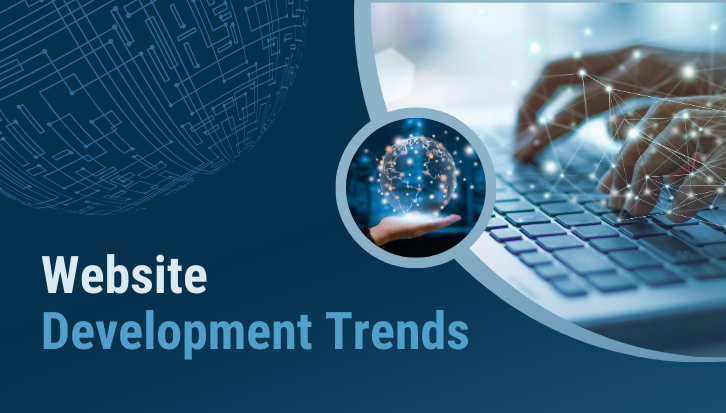The web development landscape is constantly evolving, driven by advances in technology, changing user expectations, and the demand for faster, more secure, and more innovative web solutions. As we step into 2024, here are the top trends shaping the future of web development:
1. AI-Powered Web Applications
Artificial Intelligence (AI) is revolutionizing web development. From personalized user experiences to predictive analytics, AI is making websites smarter and more efficient. Key applications include:
- Chatbots and Virtual Assistants: AI-driven chatbots like ChatGPT provide 24/7 support, improving customer engagement.
- Content Personalization: AI analyzes user behavior to recommend products, services, or content tailored to individual preferences.
- Code Generation: Tools like GitHub Copilot help developers write better code faster by suggesting solutions and automating repetitive tasks.
2. Web3 and Decentralized Applications (dApps)
Web3 technologies are moving us toward a decentralized internet where users have greater control over their data and digital identities. Trends to watch include:
- Blockchain Integration: Enabling secure, transparent transactions and decentralized databases.
- dApps Development: Creating applications powered by blockchain networks for industries like finance, gaming, and supply chain.
- NFT Marketplaces: The continued rise of non-fungible tokens is reshaping e-commerce and digital ownership.
3. Low-Code and No-Code Development
Low-code and no-code platforms are democratizing web development, allowing non-technical users to build functional websites and applications. These tools accelerate development and reduce costs. Popular platforms include:
- Webflow: For responsive web design without heavy coding.
- Bubble: For building fully-fledged web apps.
- Retool: For creating internal business tools efficiently.
4. Enhanced Focus on Performance and Core Web Vitals
Google’s Core Web Vitals continue to be a significant ranking factor for SEO. Developers are prioritizing:
- Optimizing Loading Speed: Using techniques like lazy loading, caching, and minification of CSS/JavaScript files.
- Responsive Design: Ensuring websites look great on all devices.
- Reducing Carbon Footprints: Implementing green hosting solutions and optimizing for energy efficiency.
5. Progressive Web Apps (PWAs) Continue to Rise
PWAs combine the best of web and mobile apps, offering offline functionality, fast loading times, and app-like experiences. Key reasons for their growth include:
- Cost-Effectiveness: PWAs eliminate the need for separate mobile app development.
- Wider Reach: Users can access PWAs directly through a browser without downloading.
- Improved User Experience: Smooth navigation, push notifications, and offline access make PWAs a user favorite.
6. Voice Search and Conversational Interfaces
As voice assistants like Siri, Alexa, and Google Assistant become ubiquitous, voice search optimization is crucial. Developers are:
- Implementing Voice Search: Optimizing sites for natural language processing (NLP).
- Building Conversational UIs: Integrating voice interfaces to improve accessibility
7. Cybersecurity-First Development
With increasing threats of cyberattacks, developers are adopting a security-first approach. Trends in 2024 include:
- Zero Trust Architecture: Authenticating every access request to secure sensitive data.
- Advanced Encryption Techniques: Ensuring data protection across all communications.
- Real-Time Threat Detection: Using AI-driven tools to identify and mitigate security risks.
8. Cloud-Native and Serverless Architectures
Cloud-native development and serverless technologies are enabling developers to focus on building applications without worrying about server management. Benefits include:
- Scalability: Applications can handle varying levels of traffic seamlessly.
- Cost Efficiency: Pay-as-you-go pricing models reduce operational expenses.
- Faster Development: Eliminating infrastructure setup accelerates time-to-market.
9. Augmented Reality (AR) and Virtual Reality (VR) on the Web
AR and VR technologies are transforming industries like e-commerce, education, and real estate. WebXR, the API standard for AR and VR on the web, is gaining traction. Examples include:
- Virtual Try-Ons: Allowing users to visualize products like clothing or furniture in real-world settings.
- Interactive Learning: Immersive experiences for students and professionals.
- Virtual Tours: Enhancing real estate and tourism websites.
10. Sustainable Web Development
As environmental consciousness grows, developers are adopting sustainable practices. Trends include:
- Green Hosting: Using hosting services powered by renewable energy.
- Energy-Efficient Coding: Writing lean, optimized code to reduce server load.
- Carbon Footprint Tracking: Tools to measure and mitigate the environmental impact of websites.
Conclusion
The web development trends for 2024 emphasize smarter, faster, and more secure solutions, driven by AI, decentralization, and user-centric designs. Staying ahead means embracing these innovations and continuously updating your skills and tools. Whether you’re a developer, business owner, or tech enthusiast, understanding these trends can help you navigate the evolving web ecosystem effectively.
Which of these trends are you most excited about? Let me know in the comments!

